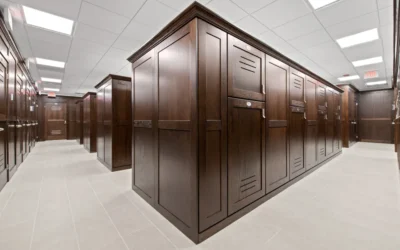Google’s grip on the marketing budgets of publicly traded self-storage REITs is tightening.
During their third-quarter earnings calls, executives at the REITs collectively bemoaned the rise — in some cases a sharp rise — in their marketing expenses. Glendale, CA-based Public Storage reported the steepest climb about the REITs: Same-store marketing costs skyrocketed 69.5 percent in the third quarter compared with the same period in 2018.
REIT executives pinned much of the blame for higher marketing expenses on intensified competition for keywords on Google, the key source of paid search traffic for self-storage operators.
A “dominant concern”
Marc Boorstein, principal of Chicago, IL-based real estate brokerage and investment bank MJ Partners Real Estate Services, said the escalation in online marketing expenses is a “dominant concern” for the public self-storage REITs that’s been dogging them for several quarters.
“Internet marketing costs are rising fast for all top operators in the self-storage industry — much faster than any other expenses, including real estate taxes or personnel costs,” said Boorstein, whose firm’s specialties include self-storage.
It’s not just traditional self-storage operators that are vying for high-value search terms on Google. Competition also is coming from valet storage startups like Clutter and MakeSpace.
“Internet search is critically important to attract customers,” Boorstein said, “and public companies continue to pay, regardless of cost increases thus far.”
Shifts in online marketing
Holly Fiorello, director of marketing at CallPotential, a Naperville, IL-based provider of software for self-storage operators, said two factors have caused a spike in online marketing costs for self-storage operators.
First, Google changed the way its ads are displayed, pushing unpaid organic results farther down a webpage.
Google ads “currently take up more real estate on the home page than they ever did before. Therefore, if you want to appear above the page fold, you have to pay to play,” Fiorello explained.
Ads above the fold on a webpage — the part of the page you can see without scrolling down — attract more eyeballs and clicks than ads below the fold do
The second factor, according to Fiorello: Expansion and consolidation in the self-storage industry have lifted online marketing expenses.
“As the portfolios of medium-size to large operators grow, so do their marketing budgets,” she said. “With their infrastructure and systems, it is easier to deploy Google ads at scale than it is for smaller operators.”
Marketing expenses of the Major REITs
Public Storage reported the biggest upswing in third-quarter marketing costs among the five major REITs.
Tom Boyle, chief operating officer of Public Storage, said the REIT “pulled pretty hard” on the marketing lever in the third quarter to elevate move-in rates during the three of the year’s busiest months for move-ins. So far, Boyle said, Public Storage is pleased with the returns it’s seeing from the boost in spending on internet marketing.
At Salt Lake City, UT-based Extra Space Storage, marketing expenses rose almost 24 percent during the third quarter compared with the same period in 2018. CEO Joe Margolis said the REIT’s digital advertising “is as expensive as we have ever seen it.”
As did their counterparts at Public Storage, executives at Extra Space said accelerated spending on internet marketing is generating a solid ROI. While Extra Space Storage is not abandoning Google ads, Margolis said the REIT is pursuing marketing alternatives like billboards and social media.
Malvern, PA-based CubeSmart experienced a much smaller bump in third-quarter marketing expenses (4 percent on a same-store basis) than Public Storage and Extra Space did.
Looking at the fourth quarter and at 2020, CubeSmart President and CEO Chris Marr said the REIT envisions producing “incremental” customers at a “reasonable cost,” although that cost is projected to outpace inflation and exceed previous spending levels. He noted that CubeSmart will continue to explore marketing channels outside online marketing.
In the third quarter, Life Storage reported same-store expenses for internet marketing climbed 21.1 percent versus the same period in 2018. Andy Gregoire, chief financial officer of the Williamsville, NY-based REIT, said the savings it has realized by reducing operating expenses like payroll, repairs, and maintenance should “more than offset” increased costs for internet marketing.
Intense competition
Tamara Fischer, president and chief financial officer of National Storage Affiliates Trust, said that although the Greenwood Village, CO-based REIT has been more efficient with its marketing budget, spending on marketing jumped 12 percent in the third quarter on a same-store basis compared with the same time last year. Ramped-up supply in some of its markets “has driven intense competition on the internet marketing front,” she said.
Chairman and CEO Arlen Nordhagen said National Storage Affiliates has eased the pain of higher marketing costs by “being more effective with our paid search strategies and our bidding strategies, and more effective with our conversions.”
That includes reliance on machine learning in an effort to optimize spending on internet marketing, he said.
“It’s frankly just one of the levers you have to pull if you want to be competitive in an oversupplied market,” said Nordhagen.







